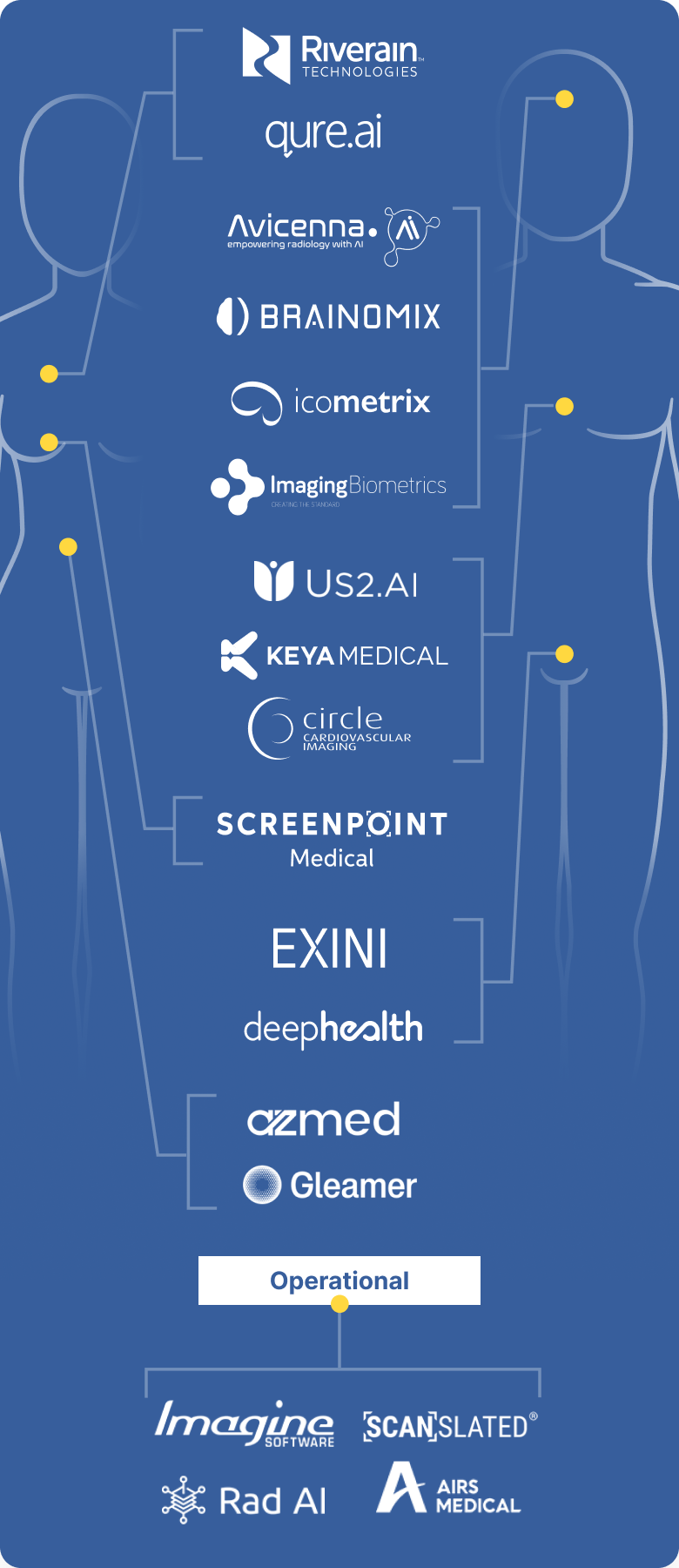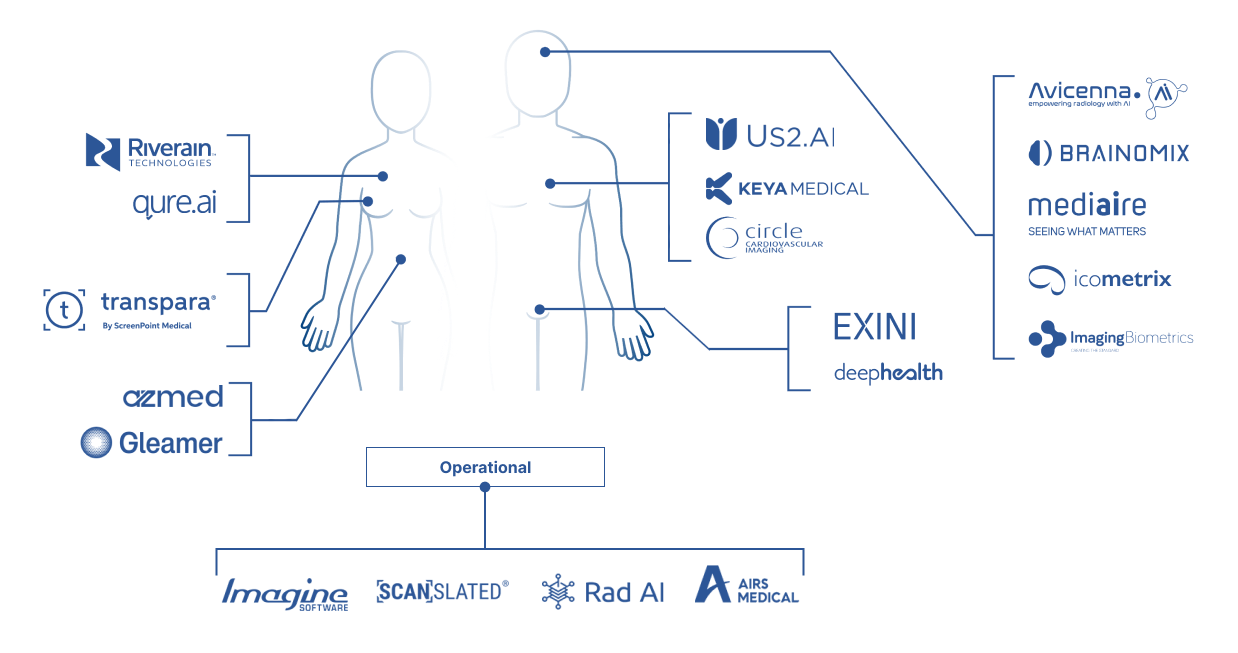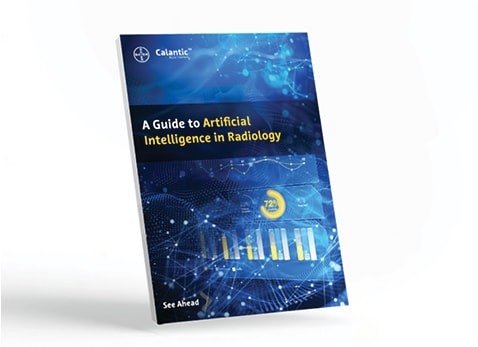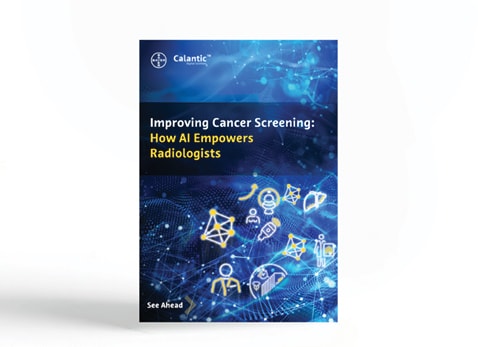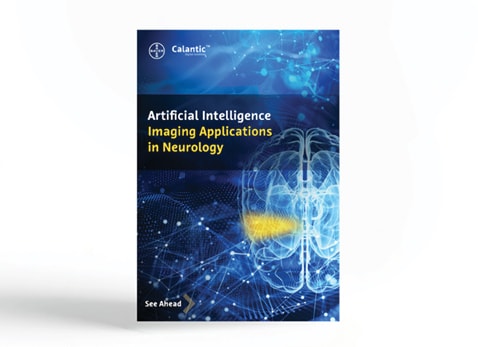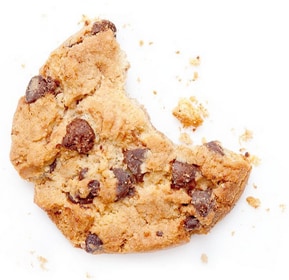Radiologists are facing barriers hindering AI adoption in clinical practice

Workflow integration
67% radiologists highlight workflow mapping and implementation as a barrier.1

Lack of trust
Only 6.7% of reviewed AI/ML algorithms had validation dataset sizes of over 1000 patients according to one study.2

Rise of AI applications
Over 720 FDA-cleared AI radiology apps in the US3, 4

Rise of AI applications
Over 720 FDA-cleared AI radiology apps in the US3, 4

Cloud-hosted platform that provides access to AI applications

Access to the Calantic curated and selected portfolio of AI applications

Zero-footprint CalanticTM Viewer smoothly accessible through the PACS viewport
